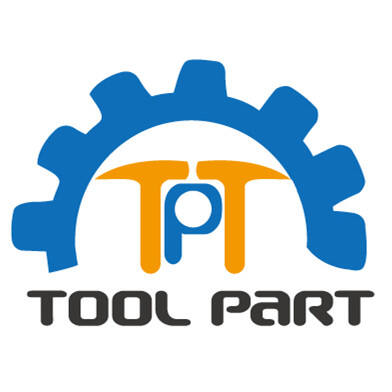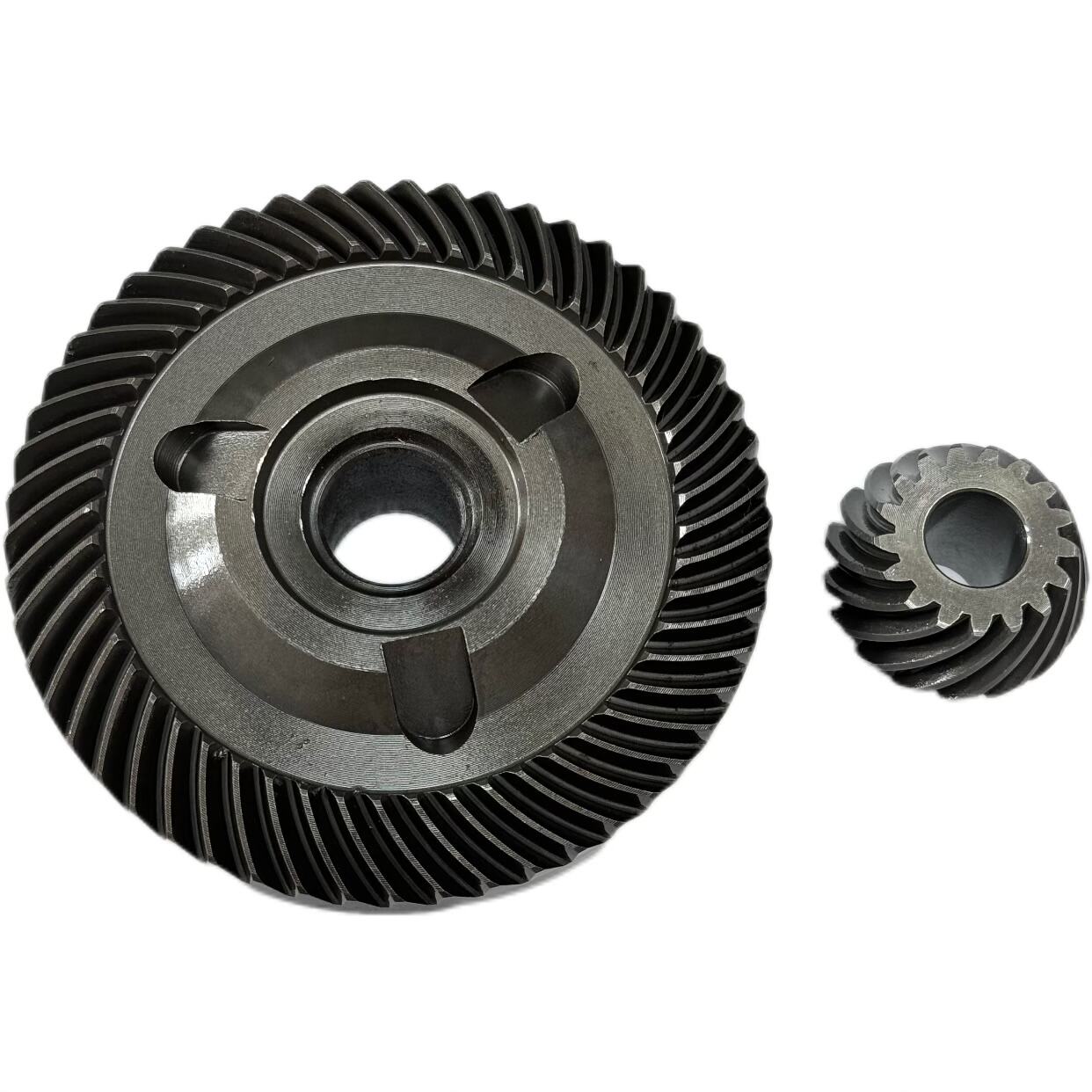Ժամանակակից ատամնալիցքերի արտադրության նյութերի ըմբռնում
Անվադողերի ատամնալիցքերի արտադրությունը մեխանիկական ճյուղավորման մեջ կարևոր բաղադրիչ է ներկայացնում, որտեղ նյութի ընտրությունը կարևոր դեր է խաղում կատարումը, տևականությունը և արդյունավետությունը որոշելու գործում: Ավտոմոբիլային փոխանցումներից մինչև արդյունաբերական սարքավորումներ, անվադողերի ատամնալիցքերը ծառայում են որպես մեխանիկական հզորության փոխանցման համակարգերի հիմք: Դրանց արտադրության համար օգտագործվող նյութերի ընտրությունը ուղղակիորեն ազդում է ատամնալիցքերի տևականության, բեռնման կրող ունակության և ընդհանուր համակարգի արդյունավետության վրա:
Ժամանակակից ատամնալիցքերի արտադրությունը զգալիորեն զարգացել է, ներառյալ արտադրության առաջադեմ նյութեր և տեխնիկաներ, որոնք բարելավում են ատամնալիցքերի կատարումը՝ համապատասխանելով աճող պահանջներին արդյունաբերական ստանդարտների կողմից: Ճյուղավորները և արտադրողները պետք է զգուշադիր համարի հարցեր, ինչպիսիք են մաշվածության դիմադրությունը, ուժի քաշի հարաբերակցությունը և ջերմային հատկությունները անվադողերի ատամնալիցքերի համար նյութեր ընտրելիս:
Մետաղական համաձուլվածքներ ատամնալիցքերի արտադրության մեջ
Ածխածնային և համաձուլված պողպատներ
Ածխածնային պողպատը մնում է ամենատարածված նյութերից մեկը անվադողերի համար, առաջարկելով ուժի, տևականության և արժեքի օպտիմալ հարաբերակցություն: Ածխածնի ցածր պողպատները սովորաբար օգտագործվում են ավելի քիչ պահանջկոտ կիրառումների համար, իսկ միջին և բարձր ածխածնային տեսակները ապահովում են բարելավված ուժ և մաշվածության դիմադրություն, որոնք անհրաժեշտ են ծանր անվադողերի համար:
Խառնուրդային պողպատները, հատկապես այն պողպատները, որոնք պարունակում են քրոմ, նիկել և մոլիբդեն, առաջարկում են գերազանց շահագործման հատկություններ: Այս նյութերը ցուցադրում են հիանալի խորացվածություն և մաշվածության դիմադրություն, դա դրանք դարձնում է իդեալական բարձր լարվածության կիրառումների համար: Օրինակ, AISI 4140 և 4340 խառնուրդային պողպատները հաճախ օգտագործվում են ավտոմոբիլային և ավիացիոն կիրառումներում նախատեսված հարուստ անվադողերի համար:
Շիկացակայուն պողպատի տեսակներ
Անմանրապաշտպան պողպատե ակները հատկապես լավ են աշխատում կոռոզիայի ենթակա միջավայրերում, որտեղ ստանդարտ պողպատե տարբերակները կարող են անհաջողվել։ Մարտենսիտային անմանրապաշտպան պողպատները, ինչպիսիք են 440C-ն և 17-4 PH-ն, համակցում են հակակոռոզիոն դիմադրության բարձր ցուցանիշներ մեծ ամրության և կոշտության հետ։ Այս հատկությունները դրանք հատկապես հարմար են դարձնում նավաշինության և սննդի մշակման սարքավորումների համար։
Օստենիտային անմանրապաշտպան պողպատները ապահովում են բացառական հակակոռոզիոն դիմադրություն, սակայն սովորաբար պահանջում են մակերեսային մշակում ատրիացիոն դիմադրություն ապահովելու համար ատամնանիվների կիրառման դեպքում։ Դրանց ոչ մագնիսական հատկությունները կարող են առավելագույնս օգտակար լինել որոշակի մասնագիտացված կիրառություններում։
Ընդլայնված ոչ երկաթի համաձուլվածքներ
Բրոնզե և պղնձե մասեր
Բրոնզի համաձուլվածքները, հատկապես ֆոսֆորական և ալյումինե բրոնզա, լայնորեն օգտագործվում են անիվների ատամնանիվերում, որտեղ կոռոզիան և ցածր շփումը հիմնարար նշանակություն են ունենում: Այս նյութերը ցուցաբերում են հիանալի մահճակալի հատկություններ և կարող են արդյունավետ աշխատել նվազագույն յուղմամբ: Դրանց ինքնայուղման հատկությունները դրանք դարձնում են իդեալական ընտրություն այն դեպքերում, երբ սպասարկման հասանելիությունը սահմանափակ է:
Բրոնզաձուլվածքե անիվների ատամնանիվերը կիրառվում են թեթև պարագայքում, առաջարկելով լավ մշակման հնարավորություն և կոռոզիայի դիմադրություն ավելի ցածր գնով, քան բրոնզայինը: Այնուամենայնիվ, դրանց ցածր ամրությունը ստիպում է սահմանափակել դրանց օգտագործումը բարձր բեռնվածության դեպքերում:
Ալյումինի և տիտանի նորամուծություններ
Ալյումինե համաձուլվածքները ավելի հայտնի են դառնում թեթև ատամնանիվերի կիրառություններում, հատկապես տիեզերական և բարձր արագության սարքավորումներում: Ժամանակակից ալյումինե անիվների ատամնանիվերը, ճիշտ նախագծման և մշակման դեպքում, կարող են առաջարկել կշռի մեծ խնայում, մինչդեռ պահպանում են բավարար ամրությունը և մաշվածության դիմադրությունը:
Տիտանի համաձուլվածքները ապահովում են բացառիկ կրիչ-քաշային հարաբերակցություն և կոռոզիայի դիմաց դիմադրություն, սակայն դրանց բարձր արժեքը սահմանափակում է տարածումը: Այնուամենայնիվ, տիտանե անիվային ատամնանիվերը անփոխարինելի են ավիատիերական և բարձր կատարում ունեցող կիրառումներում, որտեղ քաշի կրճատումը կարևոր է:
Տեխնիկական պլաստմասսաներ և կոմպոզիտներ
Բարձր կատարման պոլիմերներ
Բարձր տեխնիկական պլաստմասսաներ, ինչպիսիք են նայլոնը, ացետալը և PEEK-ը (պոլիէթեր էթեր կետոն), վերափոխում են անիվային ատամնանիվերի արտադրությունը: Այս նյութերն առաջարկում են մի շարք առավելություններ, ներառյալ աղմուկի կրճատումը, քիմիական դիմադրությունը և աշխատանքը յուղակայուն միջավայրում: Դրանց ցածր քաշը և արտադրության արժեքը դրանք դարձնում է հրապուրիչ բազմաթիվ առևտրային կիրառումների համար:
Ուժեղացված պոլիմերներ, ներառյալ ապակեթելերը և ածխածնային մանրաթելերը, ապահովում են բարելավված ամրություն և չափական կայունություն: Այս կոմպոզիտային նյութերը որոշ դեպքերում կարող են մոտենալ մետաղե ատամնանիվերի կատարմանը, միևնույն ժամանակ պահպանելով պլաստմասսայի կառուցման առավելությունները:
Կոմպոզիտ նյութերի մշակումներ
Ածխածնային մանրաթելերը և հիբրիդ նյութերը ներկայացնում են անվադողերի տեխնոլոգիայի ամենաառաջադեմ ձևը։ Այս նյութերը համատեղում են արտակարգ ամրություն և ահռելի թեթև քաշ, սակայն նրանց կիրառումը նեղացված է բարձր արտադրական ծախսերով և բարդ արտադրության գործընթացներով։
Վերջերս նանոկոմպոզիտների և մետաղային հիմքով կոմպոզիտների մշակումները ցույց են տալիս ապագայական հնարավորություններ անվադողերի համար, որոնք կարող են ապահովել ամրության, քաշի և մաշվածության դիմադրության աննախադեպ համակցություն։
Մակերեսային մշակումներ և ծածկույթներ
Հետազոտությունների պրոցեսներ
Մակերեսային պնդացման մշակումները, ինչպիսիք են կարբուրացումը, նիտրացումը և ինդուկցիոն պնդացումը, կարևոր դեր են խաղում անվադողերի արդյունավետության բարելավման գործում։ Այս գործընթացները ստեղծում են ավելի պինդ և մաշվածության դիմադրուն մակերեսներ՝ պահպանելով ավելի ճկուն հիմնական նյութերը, ինչը օպտիմալացնում է անվադողերի աշխատանքը ծանր բեռնվածքների տակ։
Ժամանակակից ջերմային մշակման տեխնիկան թույլ է տալիս ճշգրիտ վերահսկել դեպքի խորությունը և կարծրության պրոֆիլները, ինչը թույլ է տալիս արտադրողներին հարմարեցնել ատամնանիվների հատկությունները կիրառման հատուկ պահանջներին:
Ընդհանուր տեխնոլոգիաներ
Ֆիզիկական գոլորշիացման նստվածք (PVD) և քիմիական գոլորշիացման նստվածք (CVD) ծածկույթները անվանում են անիվների ատամնանիվների համար մակերեսային բարելավման ամենաառաջադեմ տեխնոլոգիաները: Այս չափազանց բարակ ծածկույթները կարող են մեծապես բարելավել մաշվածության դիմադրությունը և նվազեցնել շփումը, երկարացնելով ատամնանիվների կյանքը բարդ կիրառումներում:
Հաստատունաձև ածխածնային (DLC) ծածկույթները և այլ առաջադեմ մակերեսային մշակումները շարունակում են զարգանալ, առաջարկելով նոր հնարավորություններ ատամնանիվների աշխատանքի և տևականության բարելավման համար:
Հաճախ տրվող հարցեր
Ո՞րն է անիվների ատամնանիվների համար ամենատևական նյութը:
Վերամշակված համաձուլվածքային պողպատները սովորաբար ամենաբարձր տևականությունն են ապահովում ծանր պայմաններում անիվների ատամնանիվների համար: Նյութերը, ինչպիսիք են AISI 4340 կամ 8620-ը, ճիշտ ջերմային մշակման դեպքում մակերեսային կարծրության և միջուկի դիմացկունության օպտիմալ համադրություն են ապահովում:
Կարո՞ղ են արդյոք պլաստմասսայի անիվների ատամնանիվները փոխարինել մետաղյանները:
Չնայած ճյուղավորված պլաստմասսաները կարող են մետաղյա անիվների փոխարեն օգտագործվել որոշ դեպքերում, հատկապես այն դեպքերում, երբ առաջնահերթություն է հանդիսանում աղմուկի նվազեցումը և քիմիական դիմադրությունը, սակայն դրանք սովորաբար չեն կարող համապատասխանել մետաղյա ատամնանիվերի բեռնատարության և տևականությանը բարձր լարված միջավայրերում:
Ինչպե՞ս են բնական պայմանները ազդում ատամնանիվերի նյութի ընտրության վրա:
Շրջակա միջավայրի գործոններ, ինչպիսիք են ջերմաստիճանը, խոնավությունը և քիմիական նյութերի ազդեցությունը, կտրուկ ազդում են նյութի ընտրության վրա: Օրինակ, կոռոզիոն միջավայրերի համար կարող են անհրաժեշտ լինել չժանգոտվող պողպատներ կամ հատուկ պոլիմերներ, իսկ բարձր ջերմաստիճանային կիրառումների համար կարող են պահանջվել հատուկ համաձուլվածքային պողպատներ կամ առաջադեմ կերամիկա:

